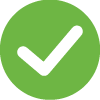How satisfied are you with our online help?*
Just these help pages, not phone support or the product itself
Why did you give this rating?
Anything else you want to tell us about the help?
Get started
The Sales area will be your go-to location for keeping track of your business's sales, letting you create quotes, take payments and see your sales history.
Before you start recording sales, it's a good idea to fill MYOB Essentials with any information that you already have. If you know who your customers are, start by adding a contact to record their details. Next, add a professional touch by personalising how your quotes, invoices or emails will appear to customers. Whether you sell stock or services, you also need to set up the items you sell. The more you set up today, the easier it is to record each sale.
If you have sales you've made before starting to use MYOB Essentials (which haven't been paid for yet), you'll need to record these. See how to enter historical sales and purchases.
Invite your accountant
If you haven't already, invite your accountant to your MYOB Essentials business.
This will let them log in and work directly with your data, so they can do your tax and make any adjustments that are needed.
Complete your monthly tasks
If you've paid any employees, you'll need to lodge your monthly IRD returns. Unless you deduct more than $500,000 per year, these are due by the 20th of the following month. See IRD monthly returns.
You'll also need to file your final GST return of the year.
You should also reconcile your bank accounts, send customer statements and record depreciation.
Run reports
Your Profit & Loss and your Balance Sheet let you know how your business has performed throughout the year (which you've probably been checking regularly). You might like to print a copy for yourself.
- Profit and Loss tells you how much profit your business has made in the last year, divided into income, expenses and net profit.
- Balance Sheet tells you your business's net worth up to the end of the financial year. It's divided into assets, liabilities and equity.
See Business reports to learn how to produce these reports.
Enter end-of-year adjustments
After taking a look at your financial information, you or your accountant might need to make some adjustments to your records. In most cases, you'll enter these as journal entries. If you're missing any bank transactions (like deposits, withdrawals or bank charges), enter them on the Spend Money or Receive Money pages.
See General Journals for information about entering journal entries, or Spend money and Receive money for information about entering bank transactions.





 Yes
Yes
 No
No
 Thanks for your feedback.
Thanks for your feedback.